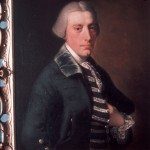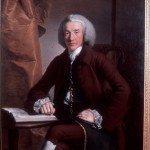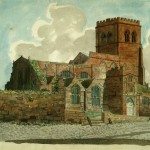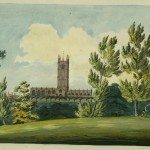Browse Topics
- Arts
- Buildings, Architecture & Monuments
- Business, Trade, Industry & Commerce
- Advertising
- Agriculture & Countryside
- Banks, Finance and Legal Services
- Domestic Service
- Innovation & Inventions
- International Contact & Trade
- Legal Services
- Printing and Publishing
- Shops & Retail
- Tourism and Hospitality
- Trades, Industries & Manufacturing
- Brass Trade
- Button Trade
- Carpet Making
- Ceramics and Pottery Industry
- Charcoal
- Chemical Industry
- Coins and Minting
- Engineering
- Glass Trade
- Gun, Sword and Weapons Trade
- Iron and Metal Trades
- Jewellery, Decorative and Toy Trades
- Mining
- Needle and Fish Hook Trades
- Pewter Industry
- Rope Industry
- Textile Industry
- Tools, Machinery and Equipment
- Unemployment
- Work, Pay & Conditions
- Culture & Diversity
- Events, Celebrations & Disasters
- Health & Medicine
- Religion, Ideas & Beliefs
- Science, Nature and Environment
- Society
- Sport & Leisure
- Transport
Fine Art

Portrait of William Cuningham-Fairlie [unconfirmed]
Sir Henry Raeburn (1756-1823, b. Edinburgh – d. Edinburgh). Wolverhampton Art Gallery. OP 533. Acquired with a… read more »

Priestley and John Wesley
Image: Portrait of John Wesley struck off by electricity by Joseph Priestley Image from: Birmingham City Archives, Priestley… read more »

Priestley and the Church of England
Image: Bishop Samuel Horsley, one of Priestley’s main Anglican opponents. Image from: Birmingham City Archives, Priestley Collection by Samuel… read more »
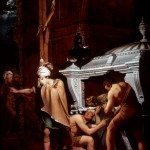
Priestley: Body, Matter and Death
Miravan Breaking Open the Tomb of his Ancestors (1772). Joseph Wright of Derby(1734-1797), Oil on canvas. Derby Museum &… read more »
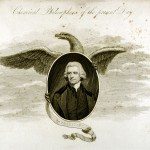
Priestley’s Arrival in America
Image: Chemical Philosophers of the Present Day, Dr Priestley. The apotheosis of Joseph Priestley. The scientist ascends into… read more »

Priestley’s Early Career
Image: The Earl of Shelburne, Priestley’s patron from 1772 to 1780 Image from: Birmingham City Archives, Priestley Collection by… read more »

Priestley’s Educational Philosophy
People, Priestley insisted, were not what they were born but what their education had made them. A… read more »

Red Castle
Image from: Bayliss, Rev J C, Views in Shropshire (c. 1839). Shropshire Archives. THIS relic of feudal grandeur and insecurity,… read more »

Remains of a Cistercian monastery called White Ladies in Shropshire
From Picturesque Views of the Severn, 1824 by Thomas Harral
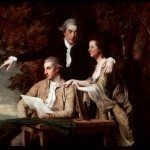
Rev. d’Ewes Coke and Family
Joseph Wright of Derby (1734-1797). Oil on canvas. Image from: Derby Museum & Art Gallery

Romeo and Juliet, the Tomb Scene
Joseph Wright of Derby (1734-1797). Oil on canvas. Image from: Derby Museum & Art Gallery

Ruins of Tutbury Castle
Water colour undated, Paul Sandby (1725-1809, b. Nottingham – d. London).

Ruins of Wenlock Abbey
Image from: Bayliss, Rev J C, Views in Shropshire (c. 1839). Shropshire Archives. Wenlock Abbey was founded about the year… read more »

Rydal Waterfall
Virgil was a famous Roman poet who died in 19 BC. His tomb was located in the… read more »

Self Portrait at the age of 20 by Joseph Wright
Joseph Wright of Derby (1734-1797). Oil on canvas. Image from: Derby Museum & Art Gallery

Shrewsbury
Image from: Bayliss, Rev J C, Views in Shropshire (c. 1839). Shropshire Archives. SHREWSBURY, the capital of Shropshire, is situated… read more »
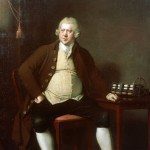
Sir Richard Arkwright: Industrialist
The art of portraiture was changing during the Industrial Revolution. The expansion of commerce and industry in… read more »

Sir Richard Arkwright: Industrialist
Image: Portrait of Sir Richard Arkwright (1789-1790). Joseph Wright of Derby, Oil on Canvas. Text: Olga Baird… read more »

South West View of Alton Castle in Stafford
Source: Samuel & Nathaniel Buck, Views of Ruins of Castles & Abbeys in England, Part 2, 1726-1739 (nd), Arts, Languages… read more »

South West View of Dudley Priory in Stafford
Source: Samuel & Nathaniel Buck, Views of Ruins of Castles & Abbeys in England, Part 2, 1726-1739 (nd), Arts, Languages… read more »

Study of Fragment of a Classical Frieze, Rome (1774)
Image: Joseph Wright of Derby (1734-1797), Pencil, pen and grey ink and grey wash. Image from: Derby Museum &… read more »

Tenbury
TENBURY LIES upon the borders of Worcestershire, towards the north-west, and joins the parish of Burford in… read more »

The Apotheosis of Penelope Boothby, 1792, Henry Fuseli
Henry Fuseli (1741-1825, b. Zurich – d. London) Wolverhampton Art Gallery. OP 79. Presented by George Cheadle… read more »

The Earthstopper on the Banks of the Derwent
Joseph Wright of Derby (1734-1797), Oil on Canvas Image from: Derby Museum & Art Gallery

The French Revolution Dinner 14 July 1791
Image: ”A Birmingham Toast, July 14th, 1791” by James Gillray. Image from: R.K. Dent, Old and New Birmingham: A History… read more »

The French Revolution Dinner 14 July 1791
Image: French Revolution Dinner. This Ticket entitles the bearer to a Bottle of Wine at the Dinner at… read more »
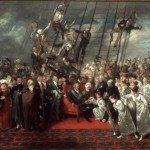
The Landing of Louis XVIII at Calais
Edward Bird (1772-1819, b. Wolverhampton- d. Bristol) Wolverhampton Art Gallery OP 121. Acquired from the Fine Art… read more »

The Lime Strata Near Dudley: The Wren’s Nest, Dip East
William Hawkes Smith, Birmingham and its Vicinity as a Manufacturing and Commercial District (London and Birmingham, 1836).

The Origins of Carpet Making in Kidderminster
Image: Kidderminster (c. 1777) Thomas Sanders, Perspective Views of Market Towns within the County of Worcester (c. 1777).… read more »

The Philosophical Context: From Optimism to Realism
The Widow of an Indian Chief watching the Weapons of her deceased Husband (1785). Joseph Wright of Derby 1734-1797),… read more »

The Wood Children
Joseph Wright of Derby (1734-1797), Oil on Canvas Image from: Derby Museum & Art Gallery

The Wrekin
Image: The Wrekin, from Cunde Park. One of the tallest hills in England, the Wrekin, a long-… read more »

Thomas Wedgwood: the Godfather of Photography
Image: The Alchymist in Search of the Philosopher’s Stone, (Exhibited 1771), Joseph Wright of Derby (1734-1797). Oil on… read more »
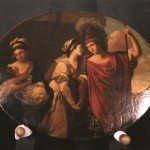
Three Ladies Adorning the Term of Hymen (The Montgomery Sisters)
Thomas Watson (1743 – 1781) after Sir Joshua Reynolds

Upton
UPTON, IS a small but neat market town, supposed by Dr. Stukeley to have been known to… read more »




